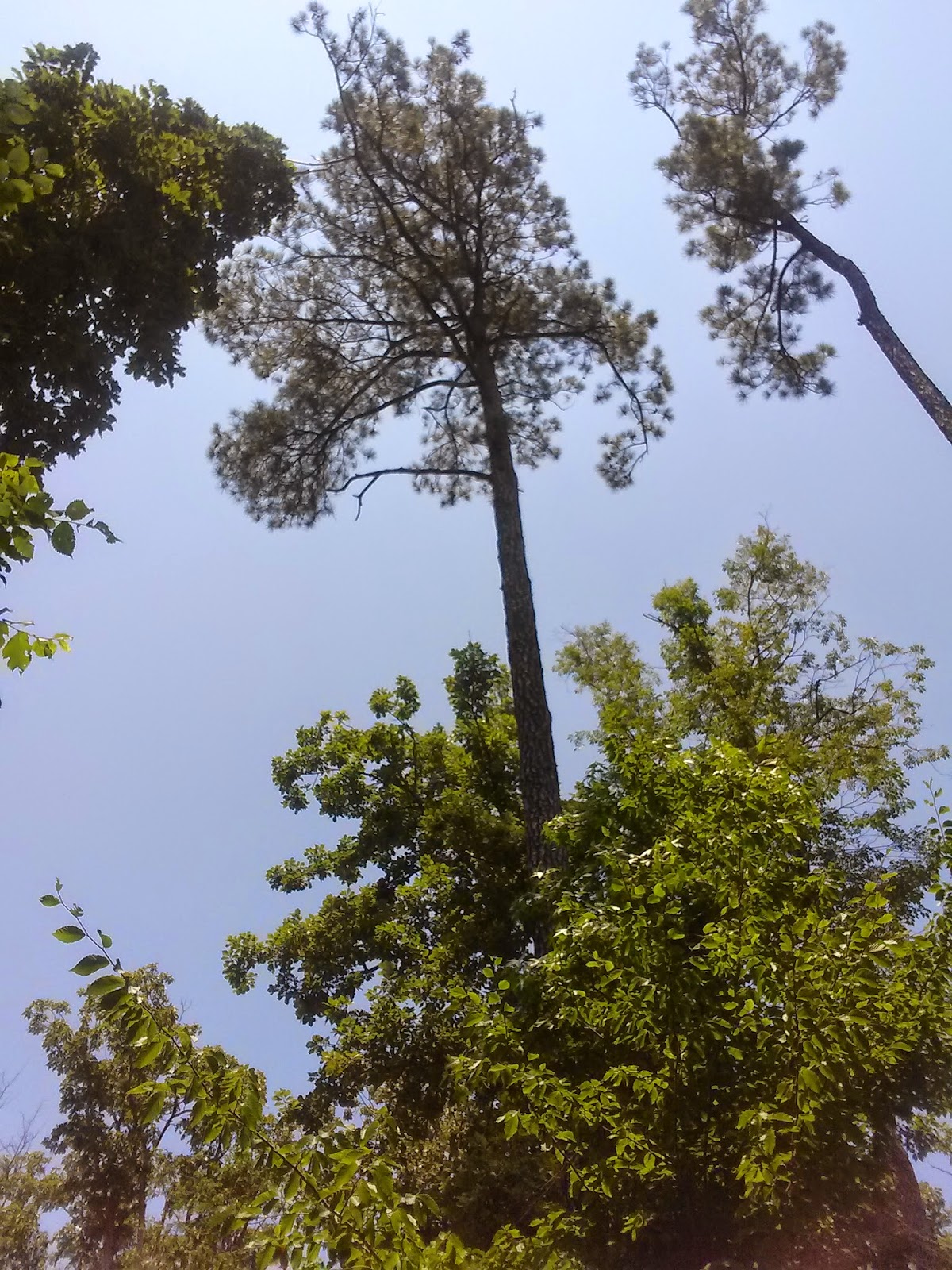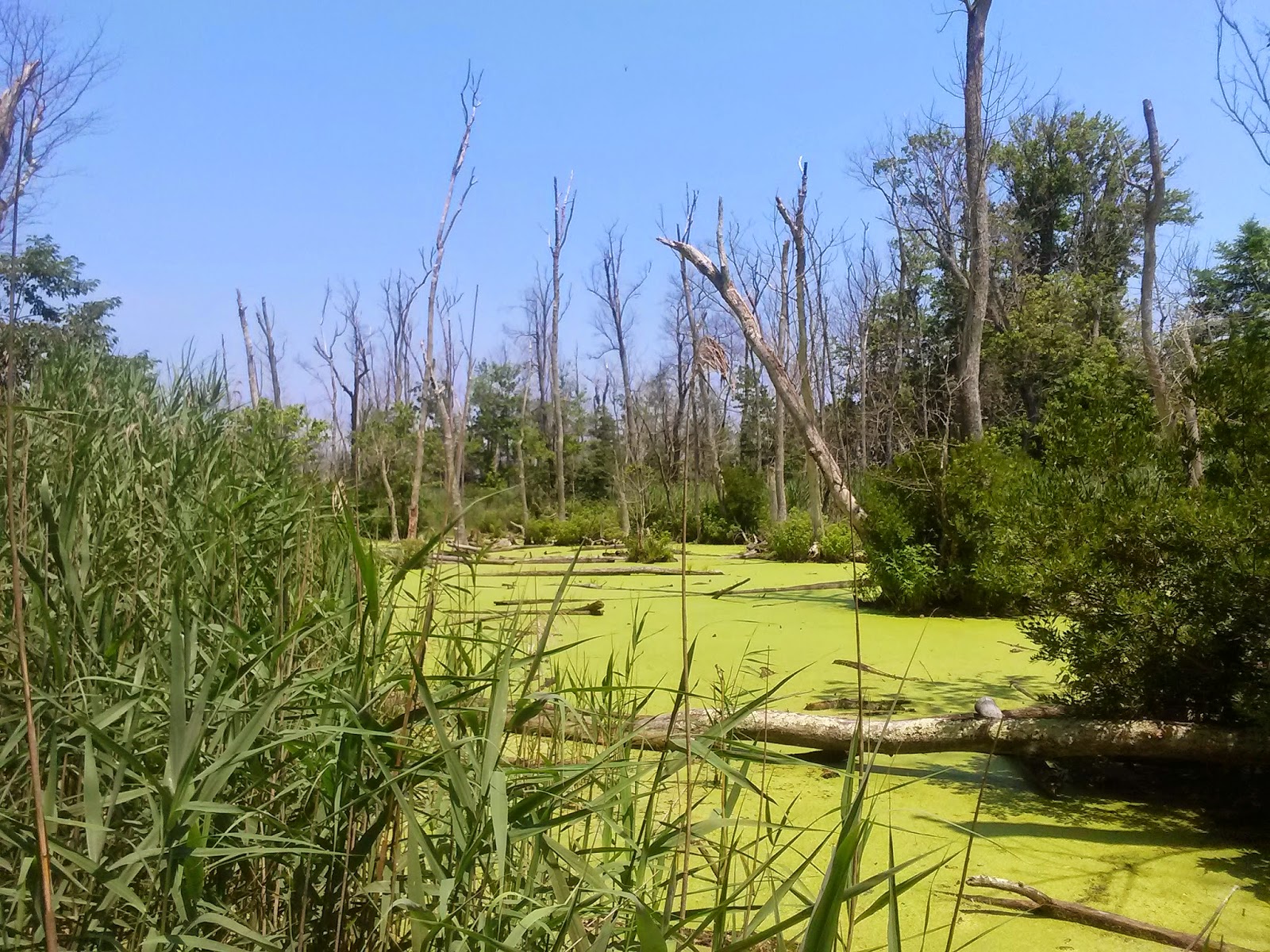Natural Notes: Habitat exploration in a Chesapeake Bay park
Date: 11 July 2014
Time: 10am-2pmLocation: Flag Ponds Nature Park, Calvert County, Maryland, USA
Weather: 85 degrees F, Sunny, 10% cloud cover, calm wind
On Friday, July 11th I had the opportunity to participate in a habitat survey and exploration at Flag Ponds Nature Park, a protected natural area along the Chesapeake Bay in Calvert County, Maryland. The park features coastal plain forest, maritime forest, swamp forest, freshwater marsh (see Figure 1), sand dunes, beach, and shallow brackish tidal marshes. The coastal plain forest is dominated by various oaks (Quercus spp.), Tulip Trees (Liriodendron tulipifera), Black Gum (Nyssa sylvatica), and other overstory trees common to the Mid-Atlantic coastal plain. The understory consists primarily of Spicebush (Lindera benzion), American Holly (Ilex opaca), Mountain Laurel (Kalmia latifolia), and other small trees and shrubs. Wet lowland areas consisted of red maple (Acer rubrum), lots and lots of pawpaw (Asimina tribola), Arrow Arum (Peltandra virginica), Lizard's Tail (Saururus cernuus L.), and others. The common plants in the sand dune areas consist of American Beach Grass (Ammophila breviligulata), Sand Burs (Cenchrus sp.), Russian Thistle (Salsola kali), Eastern Prickly Pear cactus (Opuntia humifusa), and others. In between the upland forests and the dune and beach areas is a thin strip of maritime forest, whose composition varies greatly from its neighboring coastal plain forest with many of the dominant plants being evergreen. The most common overstory tree in the maritime forest at Flag Ponds Nature Park is the Loblolly Pine (Pinus taeda) (see Figures 2 and 3). The park's more southerly location in Maryland combined with moderation from the warmer waters of the Chesapeake Bay allow for a mix of northern and southern flora and fauna to thrive, explaining in part the park's high biodiversity.
 | ||
Figure 2: Loblolly pines tower over the maritime forest community along the Duncan's Pond trail at Flag Ponds Nature Park.
|
The habitat survey/exploration revealed some interesting findings, as some of the plant communities didn't fit neatly into the description of an upload forest versus a maritime forest versus sand dunes (we did not investigate marshes and tidal areas very thoroughly, so I will not discuss those area any further in this blog post).
The first area we explored was a section of wetland forest in the northern section of the park that had extremely dense thickets of pawpaw (perhaps as many as 10 individuals per 3 cubic feet), making this area difficult to pass through. Occasionally we encountered a blackhaw viburnum (Viburnum prunifolium) or an American Holly. At the margins of this pawpaw thicket is where we encountered a gradual transition into freshwater wetlands with Lizard's Tail, Arrow Arum, and other wet-loving plants. In some of the more open and sunnier wetland and pond edges was the showy Swamp Rose (Rosa palustris), a native rose shrub that is also planted ornamental for its bright pink flower and low water and fertilizer needs (see figure 4).
 |
| Figure 4: The blossom of a Swamp Rose. |
 |
| Figure 5: A dry and sandy area in Flag Ponds in between a pond and a sand dune offered a blend of a sand dune environment and maritime forest. |
 |
| Figure 6: The leaf of the Chinquapin oak, and oak tree that thrives in warm, dry areas in the Southeast and Mid-Atlantic. |






Comments
Post a Comment